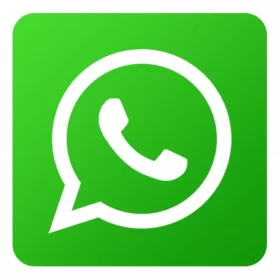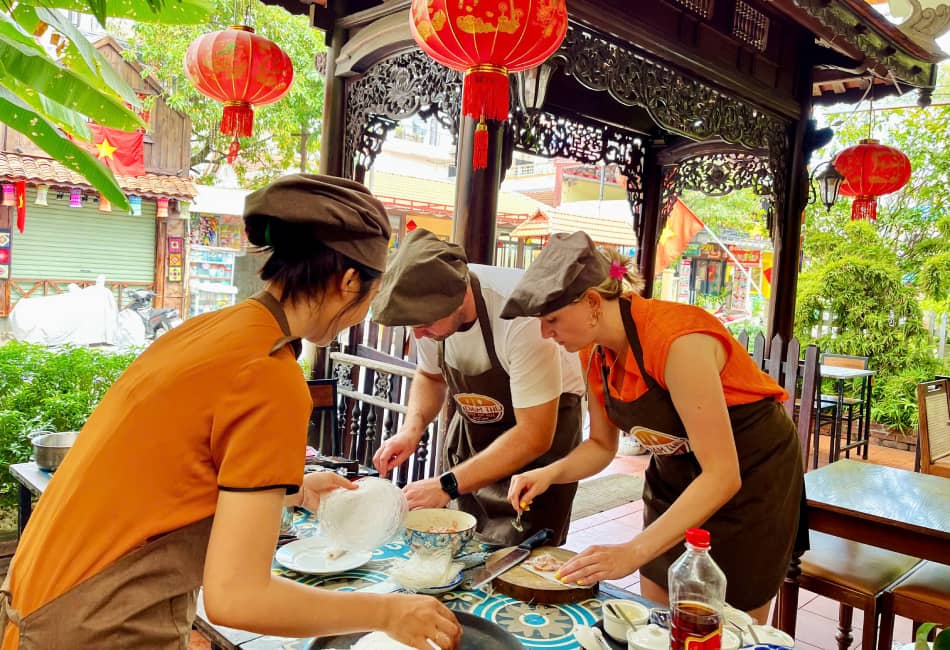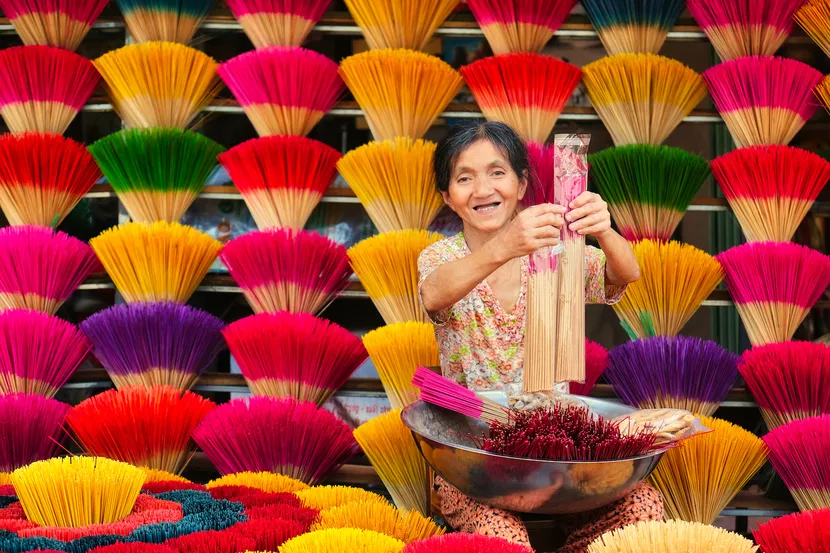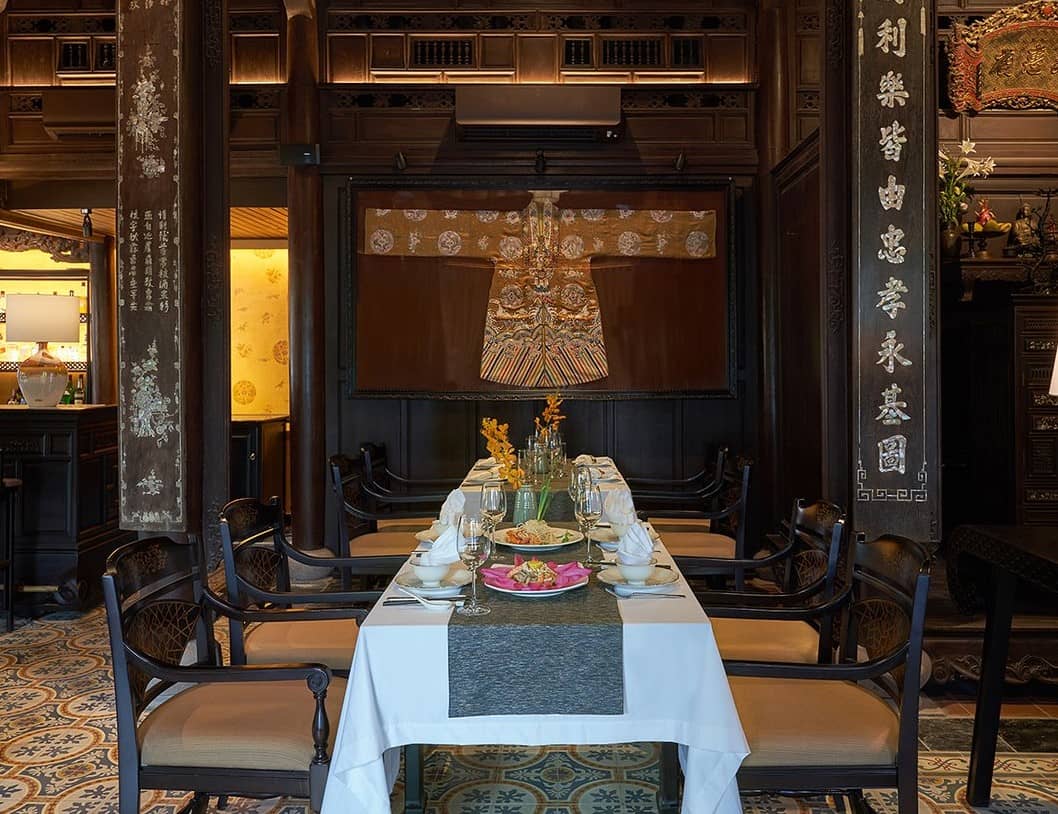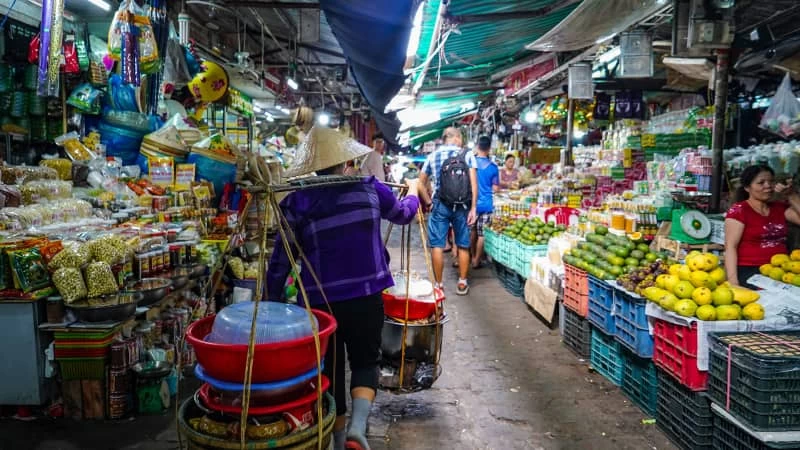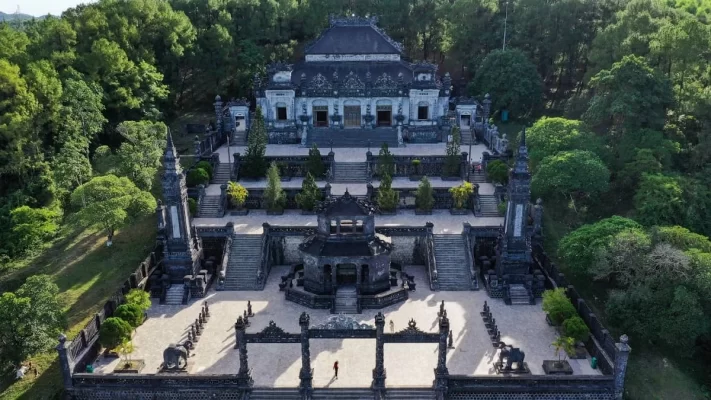
Let’s explore the beauty and meaning of Khai Ding Tomb!
Explore Khai Dinh Tomb, one of the most captivating royal tombs in Hue, Vietnam. Blending traditional and modern architecture, Khai Dinh Tomb is not only the final resting place of King Khai Dinh but also a unique masterpiece of art, highlighted by exquisite carvings, vibrant ceramic tiles, and stunning mosaic paintings. Discover the history, culture, and wonderful experiences waiting for you at Khai Dinh Tomb—a must-visit destination for every international traveler. Start your journey with Ula Travel today!
I. Overview of Khai Dinh Tomb
Khai Dinh Tomb, also known as Ung Tomb, is one of the most famous royal tombs of the Nguyen Dynasty, built to commemorate the 12th emperor of the Nguyen Dynasty, Khai Dinh. Known for its unique blend of various architectural styles, Khai Dinh Tomb attracts international tourists not only for its majestic beauty but also for its profound historical and cultural values.
1. Who is King Khai Dinh?
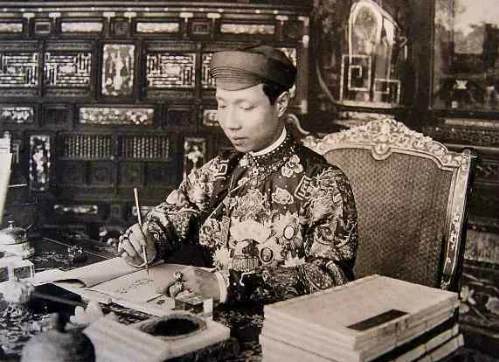
King Khai Dinh
King Khai Dinh, whose real name was Nguyen Phuc Buu Dao, was born on October 8, 1885. He was the son of King Dong Khanh and belonged to the Nguyen Dynasty—the last ruling dynasty of Vietnam.
He ascended the throne in 1916, becoming the 12th emperor of the Nguyen Dynasty. Khai Dinh reigned during a tumultuous period in Vietnamese history when the country was under strong control by the French colonial government. His reign lasted until his death in 1925.
King Khai Dinh was chosen as king by the French after King Duy Tan was exiled for participating in the anti-French movement. His ascension to the throne was seen as a political maneuver by the French to maintain stability and easily manipulate power in Vietnam.
2. Where is Khai Dinh Tomb?
Khai Dinh Tomb is situated on Chau Chu Mountain, also known as Chau E Mountain, in Thuy Bang Commune, Huong Thuy District, Thua Thien Hue Province. This location is approximately 10 kilometers southwest of the center of Hue City. The surrounding mountainous area not only creates a serene natural landscape but also holds significant feng shui meaning, symbolizing the majesty and longevity of the royal family.
3. When Was Khai Dinh Tomb Built?
The construction of Khai Dinh Tomb began in 1920, while King Khai Dinh was still in power. To realize this project, the king mobilized a significant amount of manpower and resources, with the involvement of skilled artisans from various parts of Vietnam.
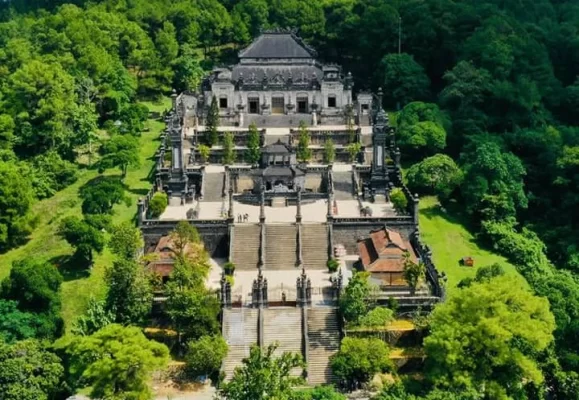
Khai Dinh Tomb took 11 years to complete.
The construction of Khai Dinh Tomb lasted for 11 years and was completed in 1931, shortly after King Khai Dinh’s death. Compared to other royal tombs of the Nguyen Dynasty, Khai Dinh Tomb is smaller in size but more refined and intricate in its decorations. It is also a project that invested a lot in precious materials, from ceramic tiles and imported porcelain to stained glass from France.
II. Cultural Significance of Khai Dinh Tomb
1. Architectural Fusion of Tradition and Modernity
Unlike the previous tombs of the Nguyen kings, Khai Dinh Tomb employs many modern materials and techniques, such as concrete, steel, and ceramic tiles, showcasing a strong influence from French and European culture during the colonial period.
Specifically, Gothic, Roman, and Renaissance architectural styles are reflected in the arrangement of the building blocks, columns, and decorative elements such as arches and intricate ceramic mosaics. This fusion not only highlights the uniqueness of Khai Dinh Tomb compared to earlier royal tombs but also reflects a shift in Vietnamese thinking about culture and art in the early 20th century.
2. Preserving and Honoring Traditional Cultural Values
Despite the Western influence, the tomb retains distinctive features of Vietnamese architecture, with familiar elements such as the shape of the roof, the Tam Quan gate, and the ceremonial courtyard adorned with stone statues of mandarins and warriors.
These elements symbolize respect for Confucian culture and traditional political philosophy. Although King Khai Dinh’s lifestyle was heavily influenced by France, he still aimed to assert the continuity and power of his dynasty through the preservation of traditional cultural elements.
3. Cultural and Historical Value for the Nguyen Dynasty
For the Nguyen Dynasty, Khai Dinh Tomb symbolizes adaptation and transformation during a particularly historic period when Vietnam was gradually succumbing to French colonial rule. This is the last tomb built for a Nguyen King, marking the end of a glorious era in Vietnamese feudal history.
The construction of Khai Dinh Tomb took 11 years, serving as evidence of the king’s meticulousness and determination to leave a profound personal imprint on the dynasty’s heritage.
4. Contribution to the Cultural Heritage of the Imperial City of Hue
As part of the UNESCO-recognized World Heritage Site of the Imperial City of Hue, Khai Dinh Tomb serves as a bridge between the past and the present, linking traditional Vietnamese culture with the modern world.
For international visitors, Khai Dinh Tomb is not only a destination to explore architecture but also a place to gain a deeper understanding of the complex cultural intersections that have occurred in Vietnam, as well as to recognize the importance of the Nguyen Dynasty in preserving and developing national cultural values.
III. What to See When Visiting Khai Dinh Tomb?
1. Tam Quan Gate
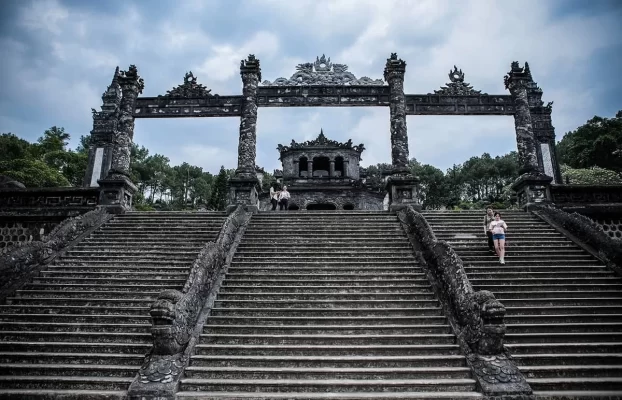
Tam Quan Gate
The Tam Quan Gate is the starting point of the journey to explore Khai Dinh Tomb. This is the main gate leading into the entire tomb complex, featuring traditional Vietnamese architecture with three entrances representing three levels: the central large gate for the emperor, flanked by smaller gates for officials and soldiers.
The gate is solidly constructed with stone and brick, adorned with intricate carvings and traditional symbols like dragons and phoenixes, representing the power and majesty of the royal court. Additionally, the decorative reliefs here combine the art of ceramics and stone, creating an ancient yet striking beauty.
Start your journey with: Discover Central Vietnam Tour in 6 Days
2. Nghi Mon and Bai Dinh Courtyard
After passing through the Tam Quan Gate, visitors will arrive at Nghi Mon and Bai Dinh Courtyard—a vast area located directly in front of the Thien Dinh Palace. This is where stone statues of civil and military officials are displayed, depicting the scene of Emperor Khai Dinh receiving tribute from his dignitaries and military.
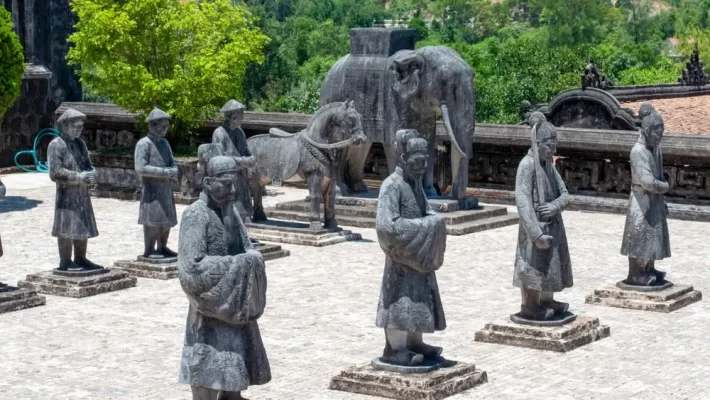
The exquisite stone statues are crafted in real human proportions.
Nghi Mon and Bai Dinh Courtyard are designed like sacred ground, with two parallel rows of statues that convey a sense of majesty and solemnity. All statues are carved from solid stone, each with different appearances and postures, intricately depicting the attire and facial expressions of each official.
Notably, these stone statues not only symbolize the power of the royal court but also hold high artistic value with their exquisite carving details, reflecting the exceptional craftsmanship of that era.
Learn more about: Central Vietnam Wonders Tour
3. Thien Dinh Palace
Thien Dinh Palace is the heart of Khai Dinh Tomb, housing the tomb of the emperor and various worship statues. Positioned at the highest point within the tomb, the palace is constructed with lavish and opulent architecture.
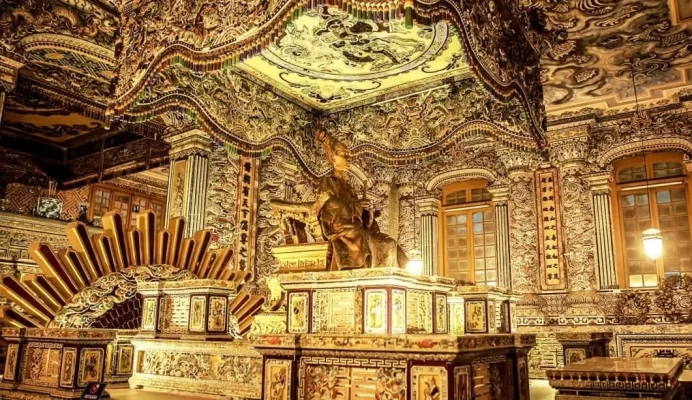
The splendor of Thien Dinh Palace
From the outside, Thien Dinh Palace attracts visitors with its majestic beauty, featuring a dome with complex carvings, decorated with distinctly Asian motifs combined with Western decorative elements like Roman-style columns and Gothic stained-glass windows.
Inside the Thien Dinh Palace, the most prominent feature is the bronze statue of Emperor Khai Dinh sitting on a throne, embodying a dignified posture. The statue is placed directly above the emperor’s tomb, secured by a robust stone grave system.
Additionally, the palace impresses with walls and ceilings adorned with ceramic mosaic art, a traditional Vietnamese technique. Colorful ceramic pieces, ranging from blue, red, to yellow, are meticulously inlaid to create vibrant images of landscapes, flowers, and dragons and phoenixes. Every detail in Thien Dinh Palace is carefully crafted, reflecting the intricacy of the carving art and the significant investment of time and effort in constructing this monument.
More details: Da Nang to Hue – Unexpected Trip You’ll Love
4. Khai Thanh Palace
Khai Thanh Palace is the central structure and the most important part of the Khai Dinh Tomb complex. Located within the tomb grounds, Khai Thanh Palace is the eternal resting place of Emperor Khai Dinh, the 12th emperor of the Nguyen Dynasty. This site not only preserves the emperor’s remains but also serves as a unique architectural symbol that perfectly combines Eastern and Western cultures.
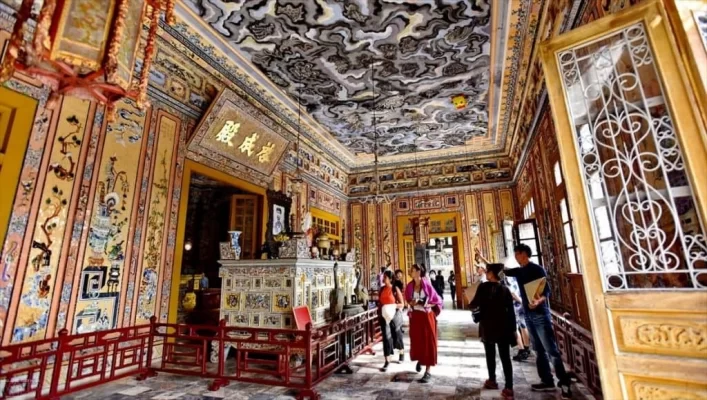
Khai Thanh Palace
Khai Thanh Palace vividly illustrates the cultural intermingling between Vietnam and France through its architectural details. The interior of the palace is elaborately decorated with meticulously carved reliefs, combining traditional Vietnamese sculpture and European decorative styles.
Notably, the ceiling of the palace features a famous mosaic titled “Cuu Long An Van,” depicting the image of nine dragons hidden among clouds, created entirely from ceramic and colored glass, resulting in a vibrant and valuable work of art.
Do not miss: Best things to do in Hue
IV. Guide to Visiting Khai Dinh Tomb for Tourists
1. How to Get Khai Dinh Tomb from the Center of Hue
By Taxi: Taking a taxi is the most popular and comfortable option if you don’t want to spend time finding your way or worrying about driving yourself. The travel time is about 20–25 minutes, depending on traffic.
- The average fare for a one-way trip from the center of Hue to Khai Dinh Tomb ranges from 150,000 VND to 200,000 VND (approximately 6-8 USD).
By Motorbike: If you want the freedom to explore and enjoy the scenery along the way, a motorbike is the ideal choice. Many motorcycle rental services are available in Hue, with prices ranging from 100,000 VND to 150,000 VND per day (approximately 4-6 USD).
- The route is quite easy; just follow Le Loi Street, then turn onto Hung Vuong Street and continue straight along National Highway 49. This route will take you through the lush landscapes of rural Hue, creating an enjoyable experience. Remember to bring your helmet and necessary documents when riding.
By Bicycle: For tourists who love physical activity and want to explore Hue’s landscapes in a nature-friendly way, cycling is the perfect mode of transportation. The cycling route from the center of Hue to Khai Dinh Tomb takes about an hour, depending on your pace and rest time.
- You will pass through quiet, small roads and can stop anytime to admire the peaceful countryside scenery, with rice fields and distant mountains. Renting a bicycle in Hue is quite easy, with prices ranging from 50,000 to 80,000 VND per day (approximately 2-3 USD).
Package Tours: If you want to experience a trip without worrying about planning, package tours from travel companies in Hue are an ideal choice. These tours often combine visits to Khai Dinh Tomb with other tombs in the Nguyen Dynasty complex, such as the tombs of Tu Duc Tomb and Minh Mang Tomb.
- Some companies even provide English-speaking guides to help you understand more about the history and culture of Khai Dinh Tomb. Tour prices range from 500,000 VND to 1,000,000 VND (approximately 20-40 USD), depending on the itinerary and accompanying services.
2. Ticket Prices and Visiting Times for Khai Dinh Tomb
Updated Ticket Prices for International Tourists: Currently, the entrance fee for international tourists visiting Khai Dinh Tomb is approximately 150,000 VND (around 6-7 USD). This price applies to adults, while children aged 7–12 are charged 30,000 VND. This ticket allows visitors to explore the entire tomb area freely and admire the architectural and artistic works inside without any additional fees.
Opening Hours of Khai Dinh Tomb: Khai Dinh Tomb is open to visitors from 7:00 AM to 5:30 PM every day, including weekends and holidays. With extended opening hours, tourists can easily arrange a flexible schedule for their visit throughout their trip.
Best Time to Visit Khai Dinh Tomb: For the best experience, the ideal times to visit Khai Dinh Tomb are early in the morning or late in the afternoon. During these times, the temperature is cooler, and the sunlight is not too harsh, making it favorable for exploring the outdoor areas.
- Morning (from 7:00 to 9:00): This is the best time to visit, as natural light is bright but not too sunny, perfect for photography. Additionally, the tomb tends to be less crowded in the morning, allowing you to enjoy the tranquil and peaceful atmosphere.
- Late afternoon (from 3:30 to 5:30): If you cannot visit in the morning, late afternoon is also a suitable time, with softer light and the surroundings becoming gentle and poetic under the sunset. This is also when the temperature drops, making it more comfortable to move between areas within the tomb.
Are you looking for: Hue Tours
V. Attractions Near Khai Dinh Tomb
1. Tu Duc Tomb
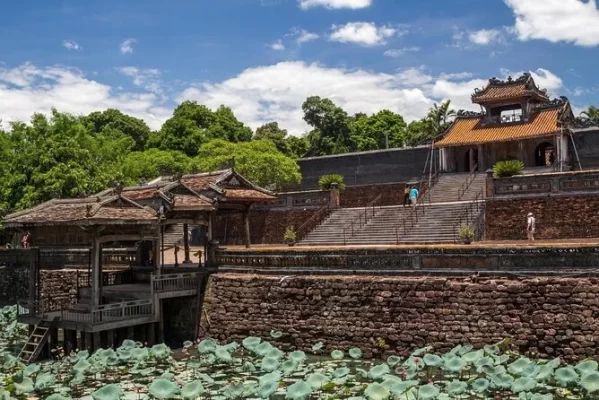
Tu Duc Tomb
Tu Duc Tomb is the resting place of King Tu Duc, one of the most talented kings of the Nguyen Dynasty. Constructed from 1864 to 1867, the tomb features a unique architectural style that blends nature with human creation. The expansive grounds include lakes, lush greenery, and eye-catching architectural structures.
- Distance: About 5 km from Khai Dinh Tomb.
- Highlights: Visitors can explore Xương Cam Lake, where King Tu Duc often came to admire the scenery, along with intricately decorated artistic structures.
Click here: Best Day Trip from Hue to Phong Nha for Your Vacation
2. Minh Mang Tomb
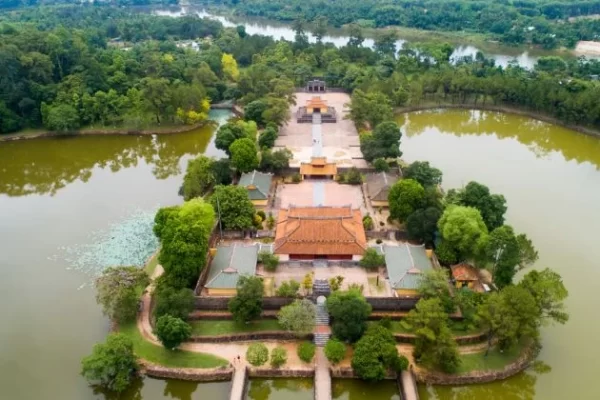
Minh Mang Tomb
Minh Mang Tomb was built in 1840 as the resting place of King Minh Mang, who implemented many important reforms during the Nguyen Dynasty. The tomb harmonizes with the surrounding natural landscape, situated amidst hills, rivers, and pine forests.
- Distance: About 7 km from Khai Dinh Tomb.
- Highlights: The tomb is designed according to Feng Shui principles, providing a sense of tranquility. Visitors can admire stone statues and unique architecture here.
3. Hue Citadel
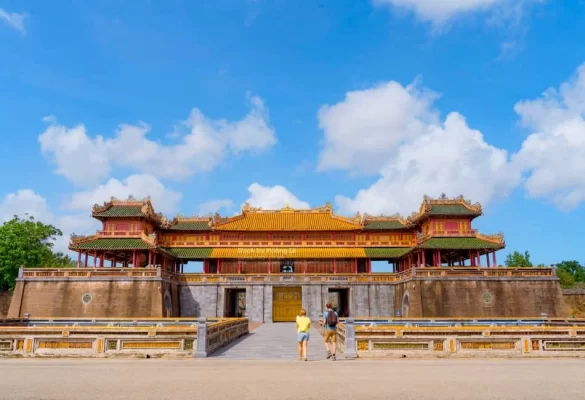
Hue Citadel
The Hue Citadel is a UNESCO-recognized World Cultural Heritage site that was once the center of power of the Nguyen Dynasty. With its system of walls, gates, palaces, and temples, this place is rich in historical and cultural significance.
- Distance: About 8 km from Khai Dinh Tomb.
- Highlights: Tour the Royal Palace, explore unique architectural structures, and learn about the history of the Nguyen dynasty.
4. Thien Mu Pagoda
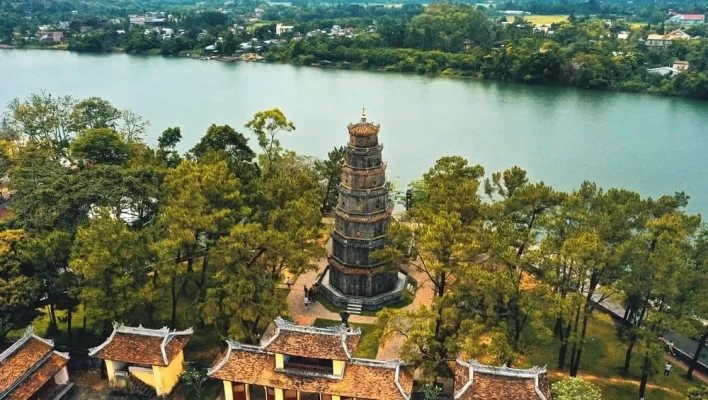
Thien Mu Pagoda
Thien Mu Pagoda, also known as Linh Mu Pagoda, is one of the most famous pagodas in Hue. Located by the Perfume River, the pagoda has a unique architecture, with the Phuoc Duyen Tower standing 21 meters tall.
- Distance: About 12 km from Khai Dinh Tomb.
- Highlights: Visitors can enjoy the picturesque scenery of the Perfume River, participate in festivals, and learn about Buddhist beliefs here.
In conclusion, Khai Dinh Tomb is one of the most outstanding architectural works of the Nguyen Dynasty, showcasing the intersection of Eastern and Western cultures. With its unique design, exquisite decorations, and impressive location in nature, the tomb is not only the final resting place of King Khai Dinh but also an essential stop for travelers interested in exploring history and culture. Visiting Khai Dinh Tomb allows you to admire the unique artistic beauty and gain deeper insights into the life of a king who played a significant role in Vietnam’s cultural heritage.
Read more: Hue Travel Tips

